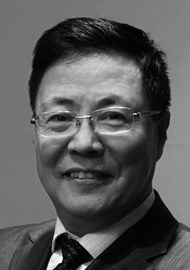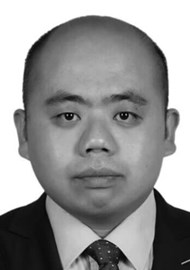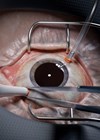I was honoured to have the privilege of reconnecting with the Tongren Eye Center team in Beijing, China. Digital art in mainstream media has showcased some glorious works and it is humbling to see and hear about some creative new pieces from Professor Wang and his team.
The relationship between science and art is a thought-provoking topic. People often view them as opposite sides of a coin, completely unrelated or even contradictory. However, while science and art may diverge at the mountain’s foot, they ultimately meet again at its peak.
In the medical field, medicine without art feels cold and distant. Medicine inherently contains extraordinary beauty, and artists often draw inspiration from medicine. As science and technology continue to advance, both fields have broken free from traditional constraints, leading to their gradual integration.
As an ophthalmologist, my research into the visual system has deepened my understanding of eye diseases and visual science. Eyes are not only crucial organs for appreciating the world but also key to creating beauty. Therefore, the responsibility of eyecare professionals extends beyond bringing light to patients; it includes building high-quality healthy visual systems that enable people to better experience this beautiful world.

眼睛与照相机– The Eye and the Camera.

天顶画 – The Ceiling Fresco.
When I encountered the work Artistically Interpreting the World of Ophthalmology by world-renowned master Emil G Bethke, I was struck by its bold creativity. It was as if a window opened before me, leading me into a completely new perspective. The vibrant colours and unique composition in the work not only showcased the intricacies of ophthalmology but also perfectly combined science with art, allowing me to deeply experience the power of artistic expression.
At that moment, the seed of creation quietly sprouted in my mind, and my thoughts began to soar as I contemplated how to combine ophthalmological knowledge with artistic understanding. My heart was filled with excitement and anticipation, as if I too was participating in a dialogue between art and science. Each conceptualisation and attempt became a challenge and opportunity for self-improvement. This process helped me realise that artistic inspiration often stems from observing and contemplating the world, and I hope to explore and present the infinite possibilities of the ophthalmological world through my own approach.
Thus, with the help of artist Ning Tian, we completed a series of surrealist paintings themed around ocular anatomy and physiology. Throughout the creative process, we maintained our belief that science represents rationality while art embodies sensibility; these two aspects don’t exist independently but rather influence and blend with each other. Through this combination, we hoped to build a bridge between science and art, bringing audiences new experiences and insights. We aimed to express ophthalmological knowledge through surrealist artistic techniques, making complex eye-related scientific concepts more accessible while people appreciate the artwork.
A camera’s structure mirrors that of our eyes, with each part serving its specific function. The lens is like the cornea, the first gateway for light entering the eye; the camera body resembles the sclera, protecting internal structures; the aperture is like the pupil, adjusting the amount of incoming light; the automatic zoom lens functions like the crystalline lens, adjusting for far and near vision; the film is like the retina, where external objects are imaged; and the camera obscura is like the uvea, ensuring images can be projected onto the film. Humans observe this beautiful world through this high-resolution imaging system.

眼球转动的操纵者 – The Puppet Master of Eye Movement.

角膜内皮之美 – The Beauty of Corneal Endothelium.

青光眼复兴号 – The Glaucoma Renaissance High-Speed Trains.
The inner world of the eye resembles a magnificent cathedral, with the iris and ciliary processes forming its colourful dome. The external world viewed through the lens, pupil, and cornea appears like a mysterious ceiling fresco. Ophthalmologists work within this cathedral, gazing at the ceiling painting, striving to bring light to this sacred space.
The Puppet Master of Eye Movement illustrates how the body controls eye muscle movements. The strings in hand represent various nerves, maintaining precise control like a galaxy system, governing the eye muscles to complete binocular movements in all directions. Strabismus manifests as an imbalance in the extraocular muscles, causing misalignment and inability to maintain binocular vision. Doctors use their sophisticated medical skills to make precise adjustments, balancing the extraocular muscles to maintain coordinated vision between both eyes.
The corneal endothelium is constructed of neatly arranged hexagonal structures, like a dome sheltering the earth below. We sit upon the pupil, gazing up at the outside world, admiring the beautiful night scenery and the vast sky.
The tunnel represents Schlemm’s canal, the withered grass represents abnormal development of the chamber angle (pectinate ligament), and the high-speed rail represents the microcatheter used in minimally invasive glaucoma surgery. Like China’s high-speed rail technology, microcatheter development has evolved from relying on imports to achieving domestic innovation. This progress represents a breakthrough in glaucoma surgery, offering hope for patients, especially those with congenital glaucoma.
Read 'Artistic vibes in Beijing' by Professor Wang and his team here.












